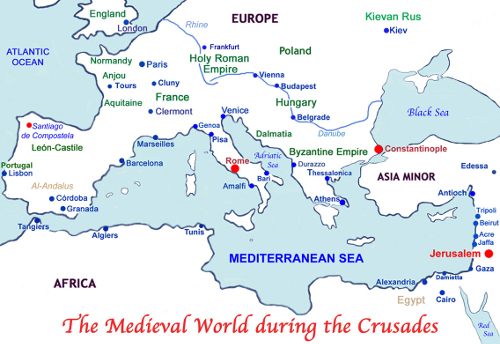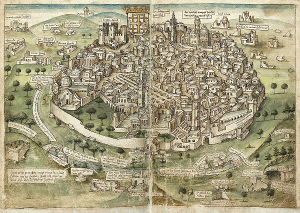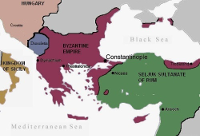The Crusades
Part 1: Background The Crusades were a series of military campaigns sponsored and led by Western political and religious leaders who wanted to retake lands in the Middle East, particularly Jerusalem and other cities known as the Holy Land. Jerusalem was a sacred place to members of three religions–Christianity, Islam, and Judaism. Muslim armies had conquered the city in the early 7th Century. Armies inspired by the leadership of Muhammad had also conquered lands from India to Spain by the turn of the 11th Century. One of the holiest sites in Jerusalem for Christians was the Church of the Holy Sepulchre because that is where the tomb of Jesus was said to have been. It was common for Christians to make a pilgrimage to the church, even though it was in a city controlled by Muslim rulers and armies. A Muslim leader, Egyptian Caliph Al-Hakim, had the church destroyed in 1009. Christians rebuilt the church, and pilgrimages continued. Entering the boundaries of what is now Turkey in the mid-11th Century were the Seljuk Turks, who defeated a Byzantine army at the Battle of Manzikert in 1071 and captured the Byzantine emperor, Romanos IV Diogenes, in the process. The Turks released the emperor for a ransom that included money and control of the important cities of Antioch, Edessa, and Hieropolis. Antioch, in what is now central southern Turkey, was an ancient Greek city, founded by a general who served with Alexander the Great. The city, situated on the Silk Road and other important trade routes, was a large and powerful city for many years, a favorite particularly of Roman emperors, and was also viewed by Christians as a sacred city, having been a center of worship and development for the new religion of Christianity and the location for missionary efforts by both the disciple Peter and the apostle Paul. Acre was another important port city that had particular value to Western Christians, because the apostle Paul visited the city, and certainly value to Western military leaders, who considered the city, with its proximity to Jerusalem, as vital to control. Edessa, too, was the location of many early Christian missionary efforts. In 1087, the Seljuk Turks took over control of Jerusalem and the Holy Land and made pilgrimages to the Church of the Holy Sepulchre more difficult. The Turks, who had by this time set up a large territory known as the Sultanate of Rum, also threatened to invade the lands held by the Byzantine Empire. The Byzantine emperor at that time was Alexius, and he appealed to Pope Urban II for assistance in defending Byzantine lands. The pope agreed, in 1095 announcing at a high-level meeting known as the Council of Clermont a call to action that became the First Crusade. The pope promised that anyone who took up arms to fight in the Holy Lands would have their sins forgiven. Many fighters and political leaders joined this effort, pledging (or affirming) their Christian faith. Those who joined, especially those were not Christian before, were said to be "taking the cross." Next page > First Crusade and Second Crusade > Page 1, 2, 3, 4 |
|
Social Studies for Kids
copyright 2002–2026
David White







